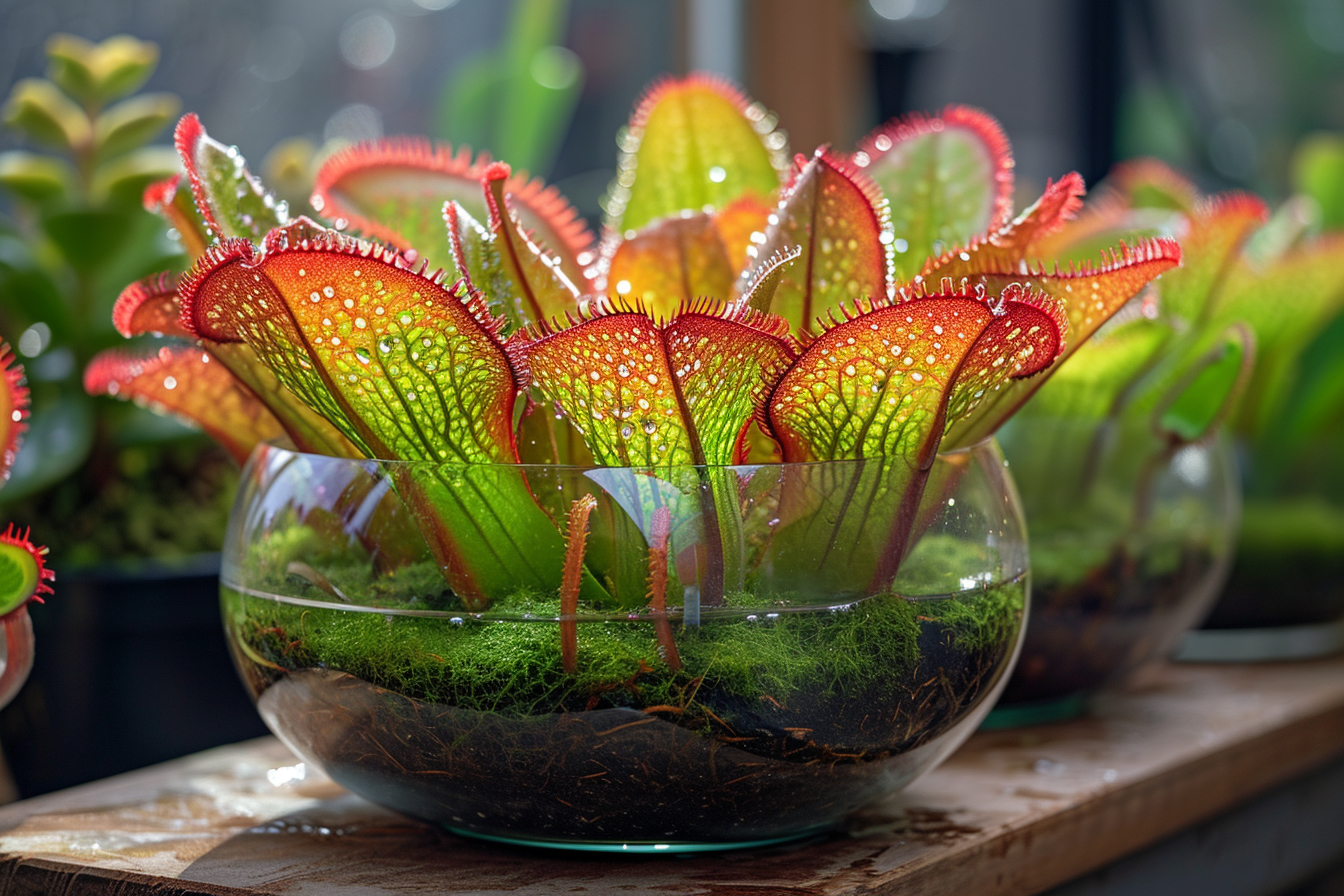
The allure of carnivorous plants
Carnivorous plants capture the imagination with their unique adaptations and striking forms. From the infamous Venus flytrap to the elegant pitcher plants, these botanical marvels have evolved to thrive in nutrient-poor environments by deriving sustenance from insects and other small animals. Creating a terrarium for these rare plants not only provides them with an optimal environment but also allows enthusiasts to observe their fascinating behaviors up close.
Understanding the environment
The Significance of Habitat Mimicry
Replicating the natural habitat of carnivorous plants is crucial for their health and growth. Most carnivorous species require high humidity, adequate lighting, and specific soil compositions to flourish. A terrarium offers an ideal micro-environment where these conditions can be controlled with precision.
Selecting the right terrarium
Size and Shape Considerations
The size of the terrarium must accommodate the growth of the plants while also providing sufficient space for their roots and trapping mechanisms. Tall terrariums are preferable for species like Nepenthes, which have long, dangling pitcher traps, whereas low and wide terrariums suit rosette-forming plants such as sundews.
Material Matters: Glass vs. Acrylic
Glass terrariums are heavy and fragile but provide superior clarity and resistance to scratches. Acrylic alternatives are lightweight and shatterproof, with the downside of susceptibility to scratching and potential warping over time.
Essential components for a successful carnivorous plant terrarium
Substrate Synthesis: The Foundation for Growth
The substrate for carnivorous plants must be acidic and low in nutrients. A mixture of sphagnum moss and perlite is often recommended, as it allows for good aeration and drainage while retaining the necessary moisture. Avoid using standard potting soil or fertilizers, as these can be harmful to your carnivorous specimens.
Lighting: A Beacon of Growth
Carnivorous plants demand ample lighting to perform photosynthesis efficiently. Grow lights can supplement natural sunlight, ensuring that plants receive the appropriate spectrum and intensity of light, even during less sunny periods or in indoor settings.
Humidity & Moisture: The Aquatic Dance
Maintaining high humidity is a cornerstone of carnivorous plant care. Misting systems can automate the process of keeping the air moist, while trays filled with water provide a constant source of humidity through evaporation.
The art of plant selection and arrangement
Choosing the Right Carnivorous Plants
When selecting carnivorous plants for your terrarium, consider their size, growth patterns, and trapping mechanisms. Plants that require similar conditions can often cohabitate peacefully in a shared terrarium environment. Look for species that complement each other visually while allowing each enough space to exhibit their unique characteristics.
Cultivation techniques for optimal growth and health
Watering Wisdom: Rainwater vs. Distilled Water
Carnivorous plants are sensitive to the minerals found in tap water. Rainwater and distilled water are preferred, as they mimic the natural precipitation these plants would encounter in their habitats. Employing a watering regimen that keeps the substrate moist but not waterlogged is important in preventing root rot and other water-related afflictions.
Temperature Control: Balancing the Scales
Terrestrial plants from temperate zones often require a period of winter dormancy, whereas tropical species thrive at consistent temperatures year-round. Monitoring and managing the temperature within the terrarium will contribute significantly to the plants’ lifecycle and vigor.
Feeding: Nutritional Supplements or Natural Prey?
While not a necessity due to their photosynthetic capabilities, feeding your carnivorous plants can bolster their growth. Small insects are ideal, aligning with their natural dietary habits. Avoid feeding them human food or meat, as this can cause decay and invite mold or bacterial growth.
Practical maintenance tips
Pruning: Encouraging Robust Growth
Regularly removing dead leaves and spent traps will prevent fungal and bacterial infections while encouraging new growth. This maintenance task is also an opportunity to inspect the plants for any health issues.
Terrarium Hygiene: A Clear View
Keeping the glass or acrylic walls of the terrarium clean ensures not only optimal viewing of the plants but also the maximum amount of light penetration. A neat terrarium is a hospitable environment for your carnivorous plants.
Common challenges and solutions
Pest Management: A Cautious Approach
Pests can be particularly troublesome in the controlled environment of a terrarium. Employing biological control methods, such as introducing beneficial insects that prey on common pests, is environmentally friendly and does not introduce harmful chemicals to the delicate terrarium ecosystem.
Disease Prevention: Vigilance and Response
Regular observation of your plants will enable you to spot any signs of disease early. Isolating affected plants and treating them with fungicides approved for use on carnivorous plants will help contain the problem.
Adapting to Growth: When to Transplant
As plants mature, they may outgrow their initial space. Transferring them to larger terrariums or individual pots allows for continued growth without overcrowding, which could lead to competition for resources and stunted development.
Advancing your terrarium with creative additions
Decorative Elements: Natural Embellishments
Adding rocks, driftwood, and other natural materials can enhance the aesthetic of your terrarium while offering structural benefits, such as providing climbing surfaces for certain species.
Engaging with the carnivorous plant community
Sharing Experiences and Gaining Knowledge
Participating in forums, attending workshops, and engaging with fellow enthusiasts are excellent ways to exchange tips, gain new insights, and keep up with the latest developments in the cultivation of rare carnivorous plants.
The infinite journey
The cultivation of rare carnivorous plants in a terrarium is a rewarding endeavor that continually unfolds. The joy of seeing a new trap develop, a flower bloom, or an insect ingeniously captured offers a window into the marvels of nature. Mastery in the art of terrarium cultivation comes not just from the accumulation of knowledge or the perfection of techniques, but also from the patient observation and the nurturing connection established between grower and plants. Each terrarium is a living canvas, ever-changing and infinitely fascinating. As your skills and understanding grow, so too will your ability to create thriving environments that showcase the captivating beauty and intrigue of these remarkable botanical predators.

